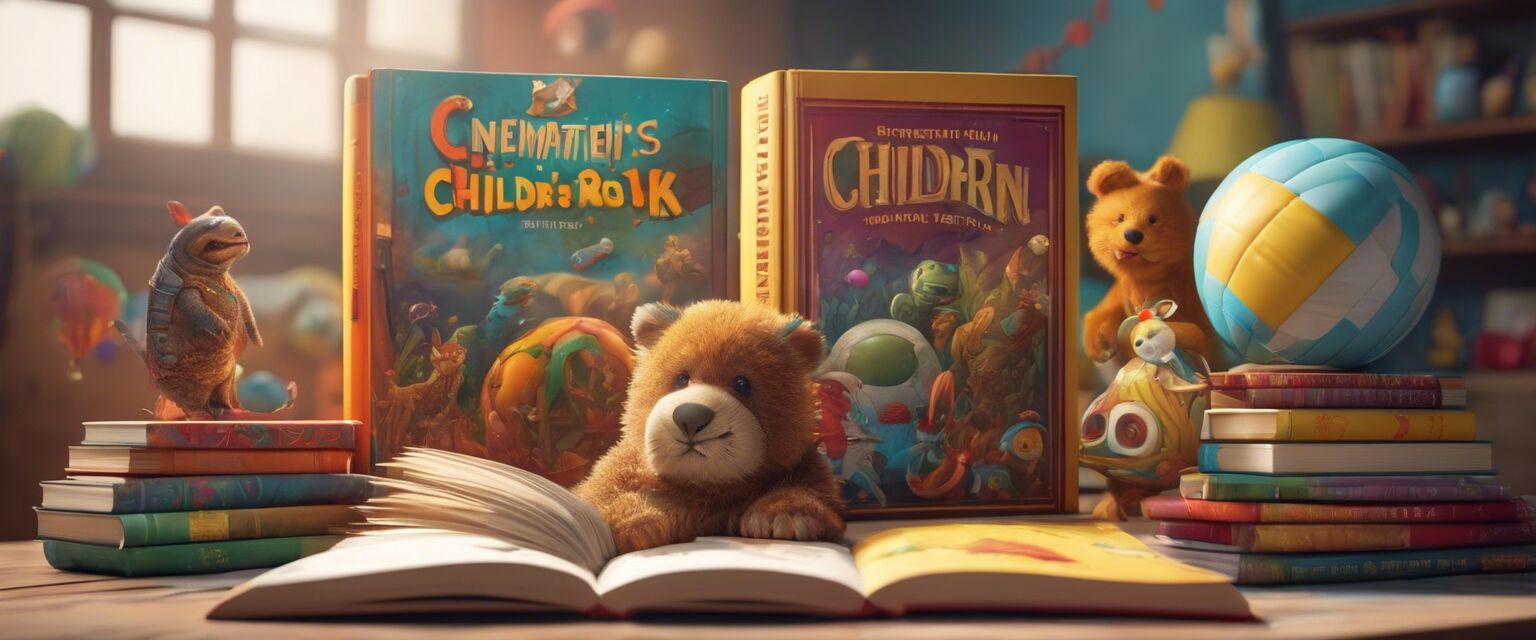
Interactive books
Key Takeaways
- Interactive books engage children through visuals and sounds, enhancing storytelling.
- These books foster critical reading skills, making learning fun.
- They come in various forms, including augmented reality and sound-activated elements.
- Choosing the right interactive book depends on the child's interests and age group.
In an age where digital technology intertwines with traditional reading, interactive books have emerged as a captivating tool that brings stories to life. These innovative books not only hold children's attention but also enrich their reading experience through engaging storytelling techniques. Hereâs your comprehensive guide to understanding and choosing the best interactive books for kids that significantly enhance storytelling skills and reading comprehension.
What are interactive books?
Interactive books are specially designed to involve readers actively. Unlike standard books, they incorporate various interactive elements that prompt children to engage with the content. These elements can include:
- Sound effects triggered by touch
- Augmented reality features that enhance visuals
- Flaps to lift and textures to feel
- Games and puzzles integrated within the narrative
Benefits of interactive books
Interactive books are not just entertaining; they provide numerous educational benefits, such as:
- Improved reading comprehension: Children learn context and vocabulary through dynamic engagement.
- Enhanced storytelling skills: Readers can visualize scenarios better and express creativity.
- Increased focus: Interactivity keeps children interested, making them more likely to complete the book.
- Development of critical thinking: Activities encourage problem-solving and comprehension.
Types of interactive books
There are various kinds of interactive books available, each catering to different age groups and interests. Here is a detailed table summarizing the different types:
| Type | Description | Recommended Age Group |
|---|---|---|
| Augmented Reality Books | Books that use AR technology to add visual elements through a device. | 6 and up |
| Sound Books | Books that include sound buttons that play relevant sounds. | Preschool to 5 |
| Touch and Feel Books | Books with different textures for tactile exploration. | Infants to 3 |
| Puzzle Books | Books that incorporate puzzles to solve as part of the story. | 3 to 7 |
| Activity Books | Books filled with games or exercises relating to the story. | 5 and up |
Choosing the right interactive book
Selecting an interactive book can be overwhelming due to the numerous options available. Here are some factors to consider:
- Age Appropriateness: Ensure the content matches your child's age and comprehension level.
- Interests: Choose themes that excite your child - animals, superheroes, or fantasy.
- Quality of the Interactive Elements: Look for durability and ease of use to ensure engagement.
- Educational Value: Select books that promote learning in a fun way.
Popular interactive book recommendations
While we won't suggest specific titles, we can point you to some popular categories worth exploring:
- Interactive Storybooks - Enchanting tales with engaging components.
- Augmented Reality Books - Stories that leap off the page via augmented reality.
- Electronic Learning Books - Books that combine education and entertainment.
- Touch-and-Talk Books - Include figures that speak when touched.
Fun interactive books to explore
We know that children thrive in environments that stimulate their imagination. Some ideas for interactive book themes are:
| Theme | Description | Example Elements |
|---|---|---|
| Adventure | Stories about exploration and journeys. | Maps, treasure hunts, and challenges. |
| Nature | Exploration of wildlife and ecosystems. | Sound effects of animals, textures for leaves. |
| Fantasy | Worlds filled with magic and wonder. | Interactive characters, spells, and potions. |
| Science | Stories that explore scientific concepts. | Experiments, questions, and theories. |
Tips for engaging your child with interactive books
Tips for Beginners
- Read together: Engage in reading time to build a reading habit.
- Ask questions: Encourage discussion around the story and its characters.
- Incorporate play: Use the book's interactive features to create related games.
- Rotate books: Regularly introduce new themes to keep the experience fresh.
Conclusion
Interactive books offer a gateway to a world where reading comes alive. From sound-activated stories to augmented realities, the options are boundless. By choosing the right interactive book, you can spark your child's imagination, improve their storytelling skills, and instill a love for reading that lasts a lifetime.
Pros
- Engaging content that captivates kids' attention.
- Dynamic learning experiences that foster skills.
- Variety of themes to cater to different interests.
- Encourages family bonding during reading time.
Cons
- Some interactive features may require batteries or technology.
- Can be more expensive than traditional books.
- Digital components might be less durable.
- Potentially overwhelming for children who prefer classic storytelling.

